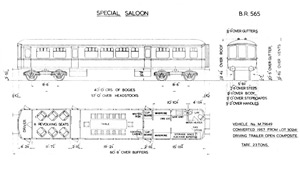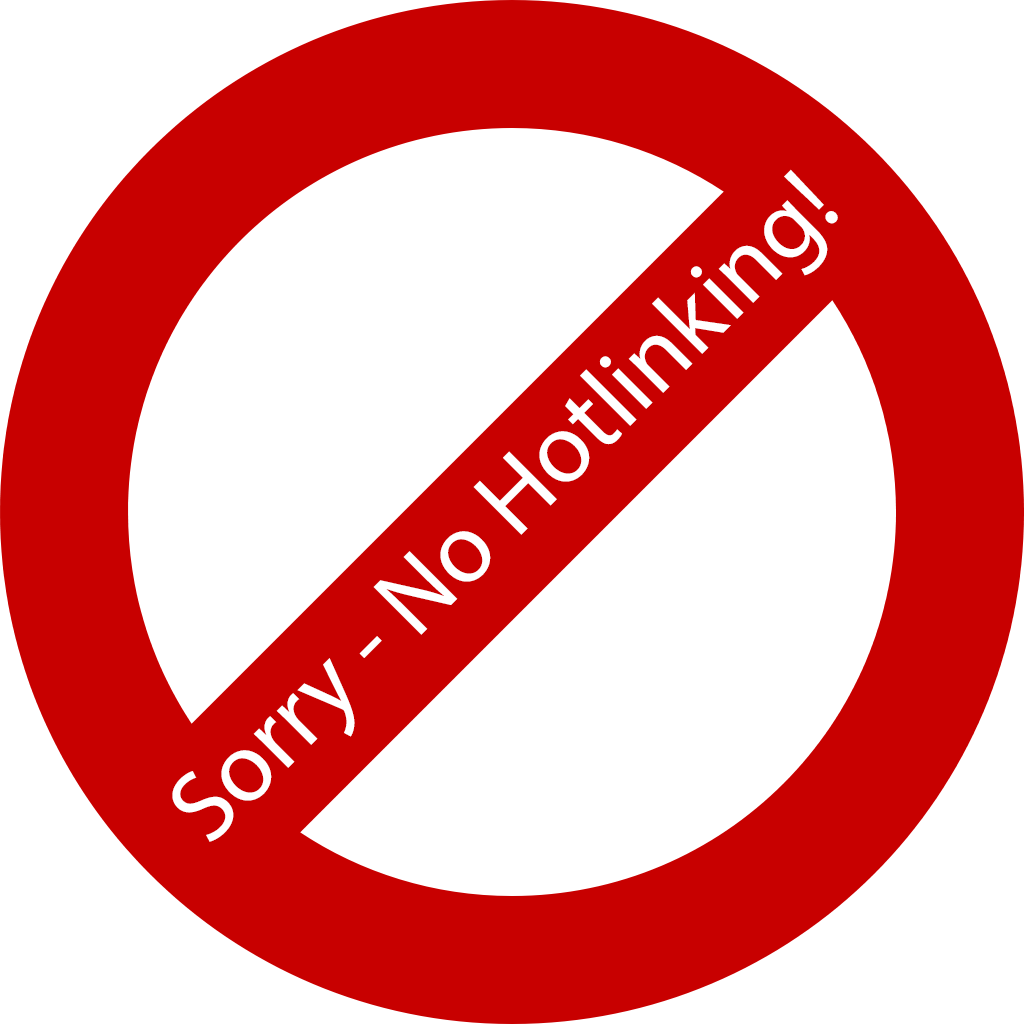Derby Lightweight (Yellow Diamond) 1, 2 & 4-car DMUs
Special Saloon M79649 / (A)DB 999510

DTCL M79649 was converted to a special saloon in 1957 for use by the London Midland Region General Manager. It initially retained its original number but eventually it would enter departmental stock as DB999510. By 1967 it was in Scotland for use by the Civil Engineers Department. It was withdrawn in 1978 and broken up in 1981.
A correspondence file in the National Archives tells us some of the history of this conversion.[1]
The story began in November 1956 when the LMR General Manager, a Mr. Blee, send a letter to LW Cox, the Chief Operations Superintendent, basically stating that the current General Managers saloon was ancient, and that they should really be flying the flag, so how about a new diesel one?
A drawing was prepared by Harry Randle, the C&W Engineer at Derby and sent to Blee in February 1957. The drawing, DE56822, was for a double ended (bubble) single car, 64’ 6” long, in the style of Class 108, with a four-character headcode box and Commonwealth bogies.
The next correspondence was from Blee to Randle on July 31st 1957 asking if an existing unit could be converted temporarily, exchanging internal fittings, then put back into traffic till next required. The reply the following day said that yes this was possible, it was something that had already been done on a smaller scale, moving seats and fitting temporary tables.
The British Transport Commission Chairman was scheduled to travel on the Region (to Holyhead, Crewe and Manchester) on the 13-15 November, and in a general letter on August 9th Blee wrote “I should like Mr Randle to let me have his proposals for meeting the Chairman’s request that he should travel from Holyhead to Crewe in a diesel train.” He stated his preference that a powered unit should be converted internally into an inspection unit, with conference table, and a cabinet to hold cold tray meals and refreshments.
Randle sent Blee two drawings on the 16th August, DE 45851 being before and DE 46185 after. A trailer car was chosen for the reduced vibration, the lavatory, and it was simpler to convert for temporary or permanent use. The drawing showed the first class saloon fitted with six Parker Knoll chairs, the main saloon had a large central table with eleven chairs around it, and a cocktail cabinet. The rear saloon had a Calor gas heater unit, a food storage area, wardrobe and sink unit. Randle also stated in his accompanying letter “If it is essential for a single vehicle to be used, I recommend one of the double ended cars being withdrawn from the Bedford service.”
Blee gave the go ahead to the conversion on the 13th September. These Derby Works images (not in the National Archives file) show the conversion. Note the revolving chairs were not fitted to the front saloon at this stage.





After the trip, the question was raised about converting it back. Randle pointed out that there was a spare trailer available in the Birmingham area (M79683). As M79649's power car had not been altered, it could re-enter traffic and allow M79649 to be stored as a saloon. Blee agreed with this at the start of December and suggested some modification to 79649.
In January 1958 Randle sent Blee drawing DE46301, a proposed layout.
The next correspondence in the file is from the 10th July when Randle advises Blee that the cost of the initial conversion was £3,765. Then there is then a letter from JF Harrison to Blee with more costs:
| Original cost of set for traffic: | power car | £15,600 |
| trailer car | £9,250 | |
| total | £24,850 | |
| Cost of initial conversion | £3,765 | |
| Costs of DE46301 | power car | £4,000 |
| trailer car | £3,500 | |
| total | £11,265 |
Cost of operating would be 3s/2.39d per mile.
In December 1959 AE Robson writes to Blee with a new proposal. Drawing DE57526A again showed a double ended single car styled like a 108/114. This time it had pressure heating/venting (supplied by Dragonair), commonwealth bogies, and a 4-character headcode box. The cost was £20,150 complete. 79649 would cost £3,000 to convert back, and listed was all the work required to do this and the surplus items.
Robson soon revised the cost for the new vehicle to £22,500 because of the Commonwealth bogies.
The final correspondence was a Works order dated 29/1/63, to fit six revolving chairs & relay the carpet, at a cost of £473. Adding the six chairs brings it to the style in the diagram at the top of this page.
It was sometimes difficult to find a yellow diamond power car to work with the saloon, and so the electrical wiring was altered at Derby in November 1960, allowing it to work paired with a blue square power car. The jumper connections at the cab end remained unaltered, and it still retained a yellow diamond on both ends[2].
Renumbering and Scotland

When the vehicle was transferred to Departmental stock is unknown, but this image taken in July 1965 shows it at Crewe with its new number DB999510. Alan Grange.

By 1967 the vehicle was in Scotland, probably in conjunction with the South Clyde electrification and now in the care of the Civil Engineers Department. It would be often be noted at Carstairs and Shields Road depot, still in green with yellow panel. The image (by Graham Johnston) shows it at Carstairs on July 16, 1967 - note the front saloon no longer seems to have revolving chairs, but has reclining seats.
On 17 August 1970 the vehicle was noted in Glasgow Central station, possibly attached to two Class 126 sets.[3]
An image of the vehicle appeared in the 1976 DMU ABC (also taken at Carstairs, on 27/3/75) but it was now in a plain (unlined) livery with a yellow panel, and had an ADB prefix.
An image on flickr of the condemned vehicle at Whitemoor Yard (March) in June 1980 shows the plain livery is probably the Civil Engineers drab olive colour. It still has the small yellow panel and yellow diamonds. Painted on the side is 'Cond 7663 9-3-78' (7663 was the code for Cowlairs Turkey Sidings). It was en-route to Snailwell where is was scrapped in March 1981.
References
- ⋏ National Archives - AN172-272 Diesel inspection trains and diesel special saloons
- ⋏ Railway Observer, January 1961, p24, Railway Correspondence and Travel Society
- ⋏ Email Gerald Brown to Stuart Mackay 28 February 2024
Summary
Description
- Single cars
- Four-car sets
Drivers Instructions
Numbering
Liveries
Operations
- West Cumberland
- Lincolnshire
- East Anglia
- North Eastern Region
- Buckingham - Banbury
- Manchester
Non-Passenger Use
- Special Saloon
- Ultrasonic Test Train
Images
Details about preserved Derby Lightweights can be found here.


